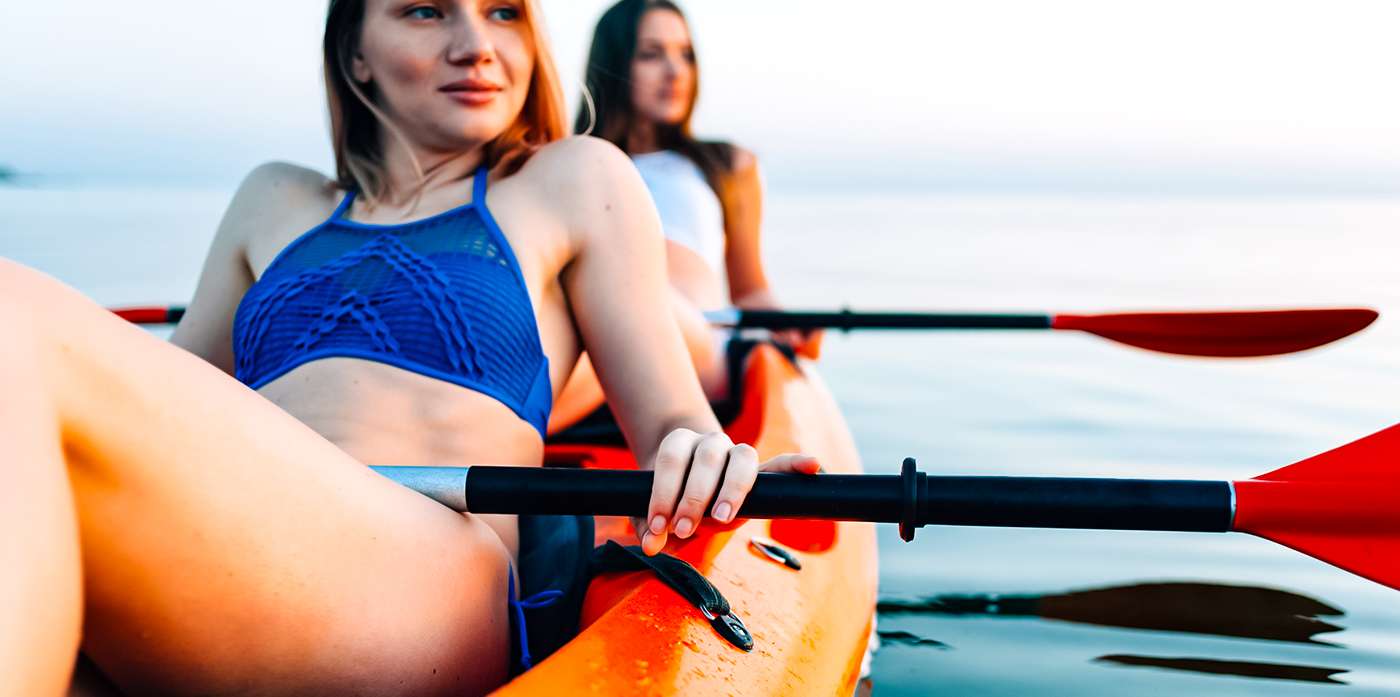The choice of paddle material is personal and based on preference, feel, esthetics, price and other factors. There is no “right” material for a paddle.
1. Wood
Wood paddles can be light, though some are heavy. They tend to not be as strong as well-made synthetic paddles, but are fine for most paddlers. They can be made in many shapes and styles and now feature attributes like feather, take apart and bent shaft just like synthetics. Wood paddles can be expensive for the fancy ones, but home-made paddles can be really cheap. Most traditional style paddles are wood.
2. Synthetic
Synthetic paddles can be made with many materials and can use mixes of materials. For example, a paddle can have the same material for the shaft and blade or different materials. This affects the weight, stiffness and significantly, price.
3. Aluminum & Plastic
Cheap paddles are available made with aluminum shafts and plastic blades. These are usually horrible performers and are only good for cottage recreational kayaks or as spares.
4. Molded Plastic
Molded plastic is usually only used for paddle blades. The plastics can be reinforced, usually by adding randomly oriented fiberglass or carbon fiber strands to the mix. Plastic blades are usually heavier than composite blades, but tend to be tough. They are a good choice for areas that are rocky or for paddlers who want a no-nonsense paddle that can take abuse.
5. Fiberglass
Fiberglass is used in less expensive paddles. It tends to be heavy, though may be robust. Fiberglass blades are relatively light but tend to be a bit fragile. The edges often chip or fray with repeated impact with rocks and things.
“Fiberglass” is typically a shorthand for “Fiber Reinforced Plastic” FRP or “Glass Reinforced Plastic” GRP and is often used interchangibly with these terms. What fiberglass really is, is fibers of glass (Duh). These thin glass fibers are gathered together to make fiberglass cloth. The glass used falls into two varieties (E-glass and S-glass) but it is really glass that does not differ much from window glass. Strangely enough the thin fibers make a flexible material that is quite strong.
There is also a common tendancy to mistake fiberglass for the resin used to binding the fibers together.
These resins are typically epoxy, vinylester or polyester. The resins are actually the plastic refered to in FRP and GRP. When combined with a liquid resin the glass, which starts off looking white, becomes clear. It is a common mistake to say “fiberglass” when what people really mean is the resin.
6. Carbon Fiber Paddles
Carbon fiber is used in premium paddles and the price shows it. This material makes for very light, strong paddles. Carbon fiber blades are lighter than fiberglass, but have the same problems with chipping and so on.
Carbon fiber usually refers to fabric made of yarns spun from extremely fine strands of carbon, though strictly speaking, the name refers to the fibers themselves.
Carbon fiber is also called graphite or graphite fiber. It has a distinctive look to it, being jet black but reflecting a shiny grey at certain angles. It looks a lot like coal, in fact. Carbon fiber was invented in Britain in 1963.
Making carbon fiber can be roughly described as:
- Take a long-chain polymer with carbon atoms forming the main “spine” of the molecule.
- Use heat, chemicals, whatever to remove anything from the molecule that isn’t carbon while leaving the spine intact.
The resulting fibers are extremely fine and very strong – stronger and stiffer by weight than steel.
Carbon fiber fabrics are available as unidirectional or woven with fibers in two or more directions. Carbon fiber conducts electricity, unlike most FRP reinforcing fibers. When mixed with resin or epoxy, it is also called carbon fiber reinforced plastic (CFRP).
The advantages of CFRP are high strength and stiffness. One significant disadvantage is its impact resistance is poor compared to other FRPs. To overcome this problem, kayak manufacturers often mix carbon fiber with other materials like Kevlar or fiberglass. These can be mixed in a single fabric by weaving alternate yarns of carbon fiber and, say, Kevlar or by alternating layers of carbon fiber with layers of, say, Kevlar.
6. Kevlar Paddle
Some carbon and fiberglass paddles are reinforced with other materials, such as Kevlar. Mixing the materials and the way that they are layed up allows the paddle designer to tune the stiffness and strength of a paddle for a given weight.
Last modified: March 27, 2022


